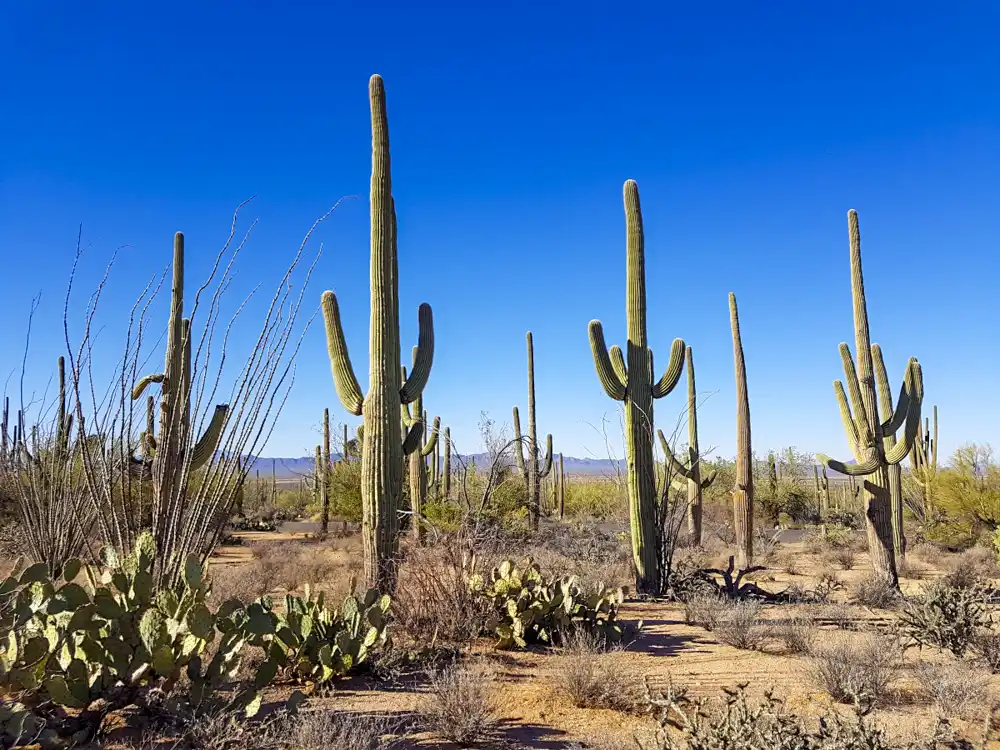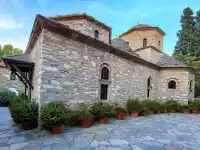“Want to see cacti? Lots of cacti?” Zdeněk asked me. I admitted that the most cacti I’d ever seen were at an exhibition. We set out from Casa Grande, Zdeněk’s home base, heading toward Tucson, and I was eager for a change from what we’d seen so far.
Saguaro National Park: A Desert Wonderland
Saguaro National Park sprawls on both sides of Tucson, a city southeast of Phoenix and Casa Grande, near the Mexican border. The arid land is dotted with cacti—tall, short, solitary giants, and clustered formations. It’s a sight to behold. Standing next to one of these towering plants, nearly three times my height, I felt transported to the world of Westerns. Tucson, Yuma, Apache Peak—arid U.S. lands and open spaces. Yes, this is Arizona.
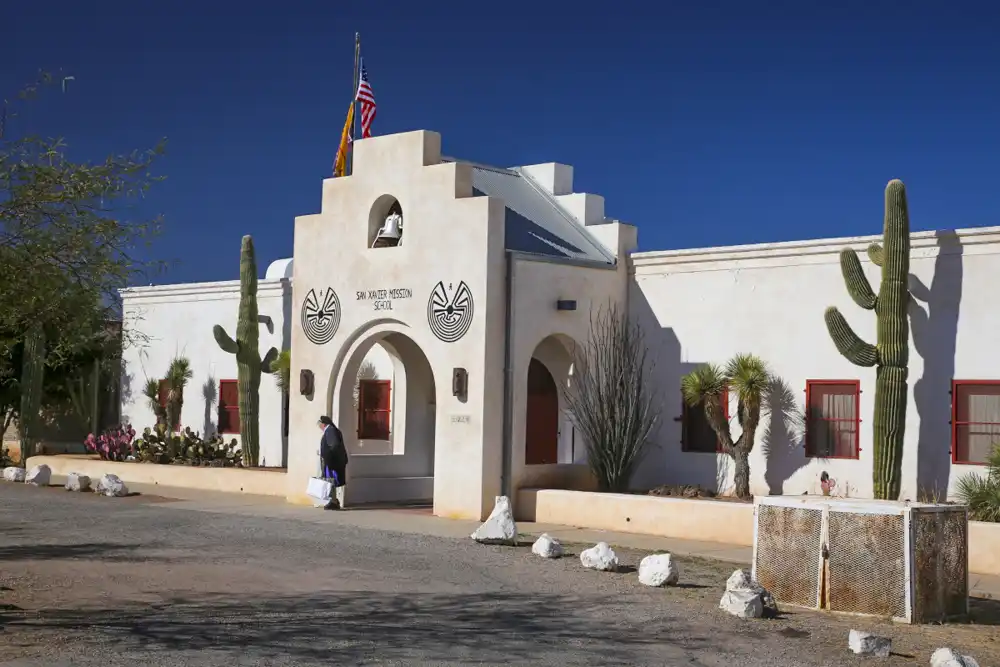
Giants of the Desert
The towering saguaros grow to extraordinary sizes. Each one starts as a simple column, but over time, they take on creative and unique shapes. You’d be amazed at their diversity.
Saguaro cacti are native to the Sonoran Desert. According to Indigenous legends, these plants embody the spirits of their ancestors. Tucson is home to the largest cacti in the country. These majestic plants, a universal symbol of the American West, thrive in this region, protected by Saguaro National Park, which spans both the east and west sides of the city. Their crowns are said to host golden eagles, adding another layer of magic to this desert wonderland.
Sonoran Desert: Nature’s Sculptor
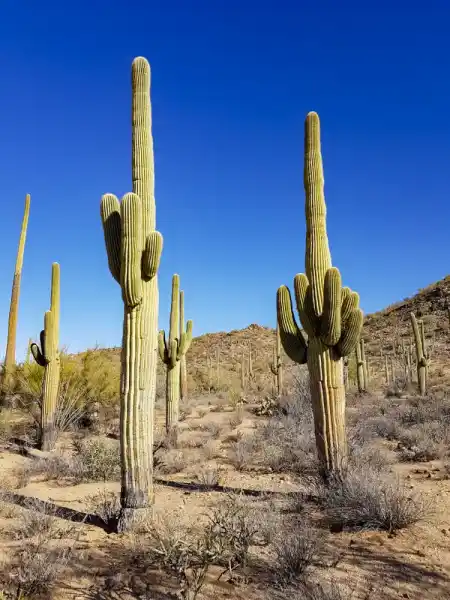
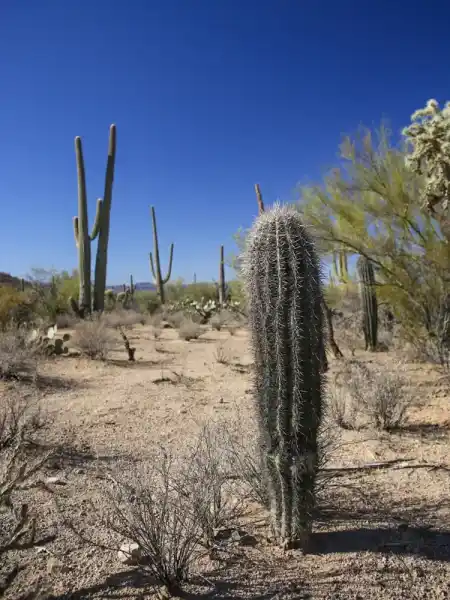

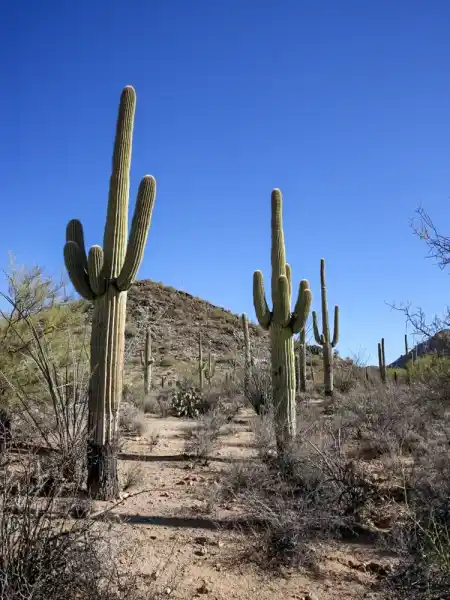
Saguaros grow incredibly slowly. In their first eight years, they may only reach a few centimeters in height. Fully grown saguaros can tower over 20 meters (65 feet). Their growth depends on water availability, and their accordion-like pleats allow them to expand and contract as they store or lose water. A well-hydrated saguaro can weigh over 4 tons. They begin to bloom at around 35 years old and typically grow their first arms by 50. By the age of 125, a saguaro is considered mature, and their lifespan ranges from 150 to 200 years.
No Water, No Trails Without Preparation
In an effort to preserve the park’s authenticity, there are no vending machines, concession stands, or restaurants within Saguaro National Park. Water fountains are located only in the two visitor centers, making these your last chance to fill up before hitting the trails.
The park offers no vehicles for exploring. Campsites are available only in the Rincon Mountain District (the park’s eastern section). Otherwise, it’s all on foot. Come prepared with everything you need, as there are no showers or running water in the park.
With over 150 kilometers (93 miles) of trails, Saguaro National Park has options for every level of hiker. Many trails are relatively short but unforgettable.
Must-Explore Trails in Saguaro East
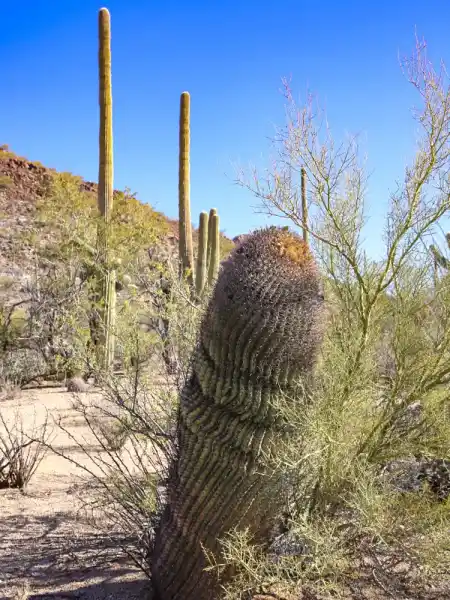
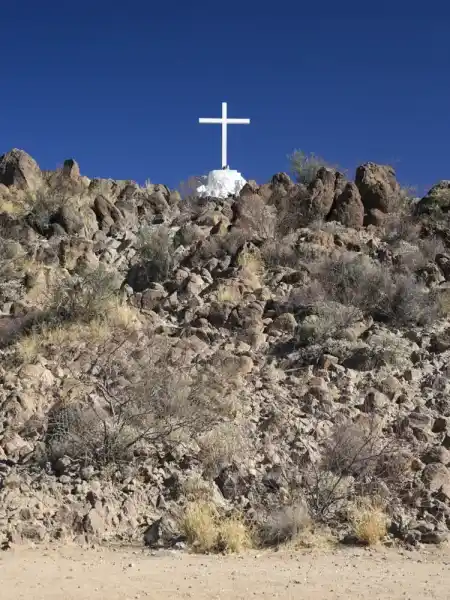
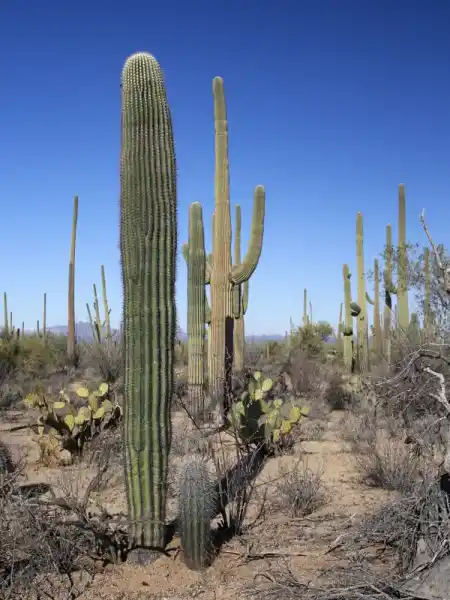
Freeman Homestead Trail (1.6 km / 1 mile)
This short trail winds through a desert landscape dotted with large saguaros and leads to an old homestead. Interpretive signs along the way share the history and biology of these iconic cacti.
Loma Verde Loop (6.1 km / 3.8 miles)
This trail takes you through a mesquite grove to Pink Hill Trail, offering stunning views of the cactus forest and the Tanque Verde Ridge.
Hope Camp and Ridgeview Trail (3.2 km / 2 miles)
A trail leading to an old ranch site used for cattle herding. The Ridge View section offers breathtaking panoramic views and seasonal cactus blooms. It ends with a spectacular overlook of Box Canyon, the park’s main drainage channel. During the wet season, you might even see waterfalls from the ridge.
Garwood Dam and Wildhorse Tank (10 km / 6.2 miles)
This trail takes you through the cactus forest that inspired the park’s creation in 1933. You’ll pass the Garwood Dam, built in the 1950s, and the Little Wildhorse Tank, one of the few permanent water sources in this otherwise arid environment. The views of the Santa Catalina Mountains are unforgettable.
Tanque Verde Ridge Trail
One of the park’s most challenging trails, this trek rewards hikers with sweeping views of nearby mountain ranges and the entire Tucson Basin.
Highlights of Saguaro West
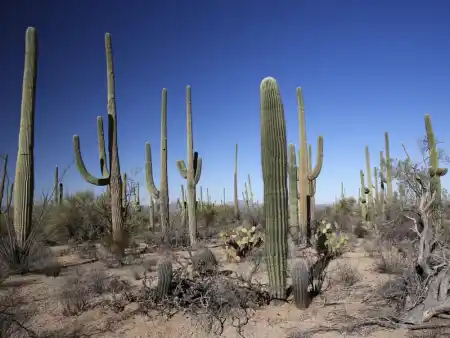
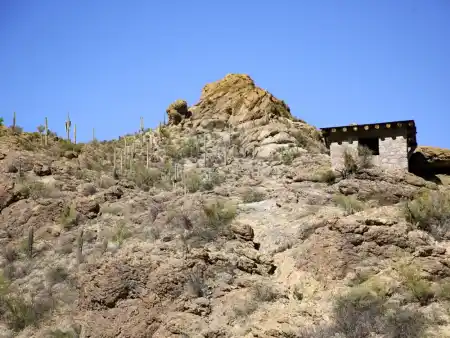
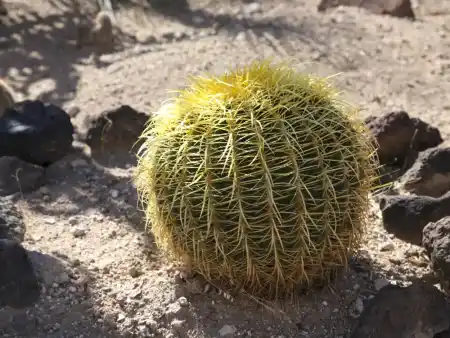
Wild Dog Trail (2.8 km / 1.7 miles)
Starting from Valley View, this short, easy loop trail is perfect for taking in the desert landscape. Its name alone makes it intriguing.
King Canyon / Gould Mine Loop (1 km / 0.6 miles)
This trail follows the sandy floor of King Canyon Wash, a historic mining road flanked by canyon walls. Watch out for bees near the moist sections of the wash.
Sendero Esperanza Trail
After a few flat kilometers, this trail climbs to a ridge offering stunning panoramic views of the valley. The scenery is otherworldly!
Arizona’s Unique Deserts
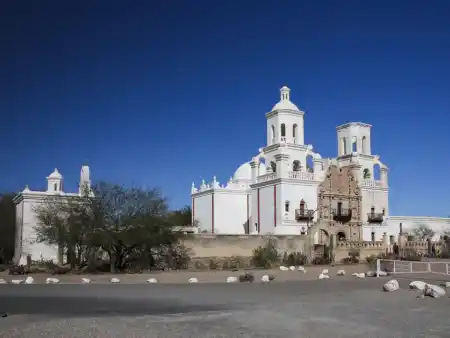
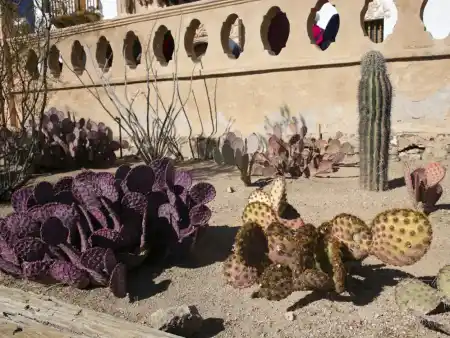
Arizona is home to four major deserts: the Sonoran, Mojave, Chihuahuan, and Great Basin. Each offers its own unique beauty and ecosystems. Perhaps we’ll explore these in future articles.
Saguaro National Park is more than just a collection of cacti; it’s a testament to the beauty and resilience of the desert landscape. Whether you’re here for a leisurely walk or a challenging hike, the park’s trails and vistas will leave a lasting impression. Just remember—bring plenty of water!

